Nozzles come in various shapes and sizes, each designed for a specific purpose. From agriculture to aerospace, nozzles play a crucial role in various applications. In this article, we will explore some common types of nozzles and their respective uses.
What Are Nozzles
A nozzle is a device that controls the flow and direction of a fluid, typically a gas or liquid. It achieves this by converting the kinetic energy of the fluid into potential energy, or vice versa, thereby accelerating or decelerating the fluid as it passes through.
A sample diagram of a nozzle is shown below:
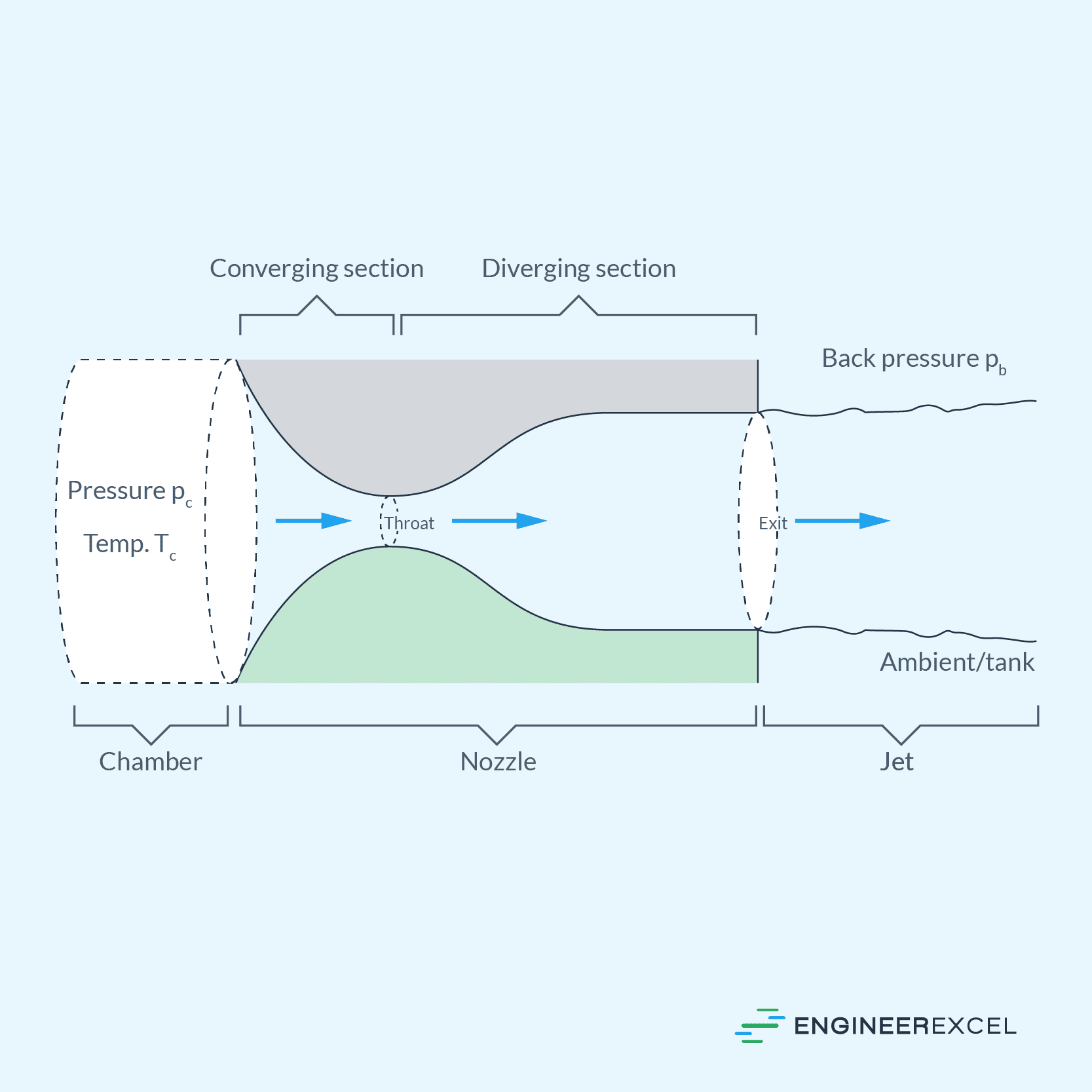
The working principle of a nozzle relies on the conservation of mass and energy, represented by the Bernoulli’s equation and the continuity equation. When fluid enters the nozzle, its pressure decreases as its velocity increases, allowing the fluid to be directed as needed.

Elevate Your Engineering With Excel
Advance in Excel with engineering-focused training that equips you with the skills to streamline projects and accelerate your career.
Types Of Nozzles Based On Application
Nozzles are widely used in various applications to control the flow and direction of fluids. The type of nozzle used depends on the specific application and the desired outcome. Here are some different types of nozzles based on their applications.
Spray Nozzles
Spray nozzles include agricultural spray nozzles used in farming to disperse pesticides, herbicides, and fertilizers; fire hose nozzles designed to deliver a high-velocity stream of water to combat fires; and paint spray nozzles used in automotive and industrial painting to achieve an even and controlled paint application.
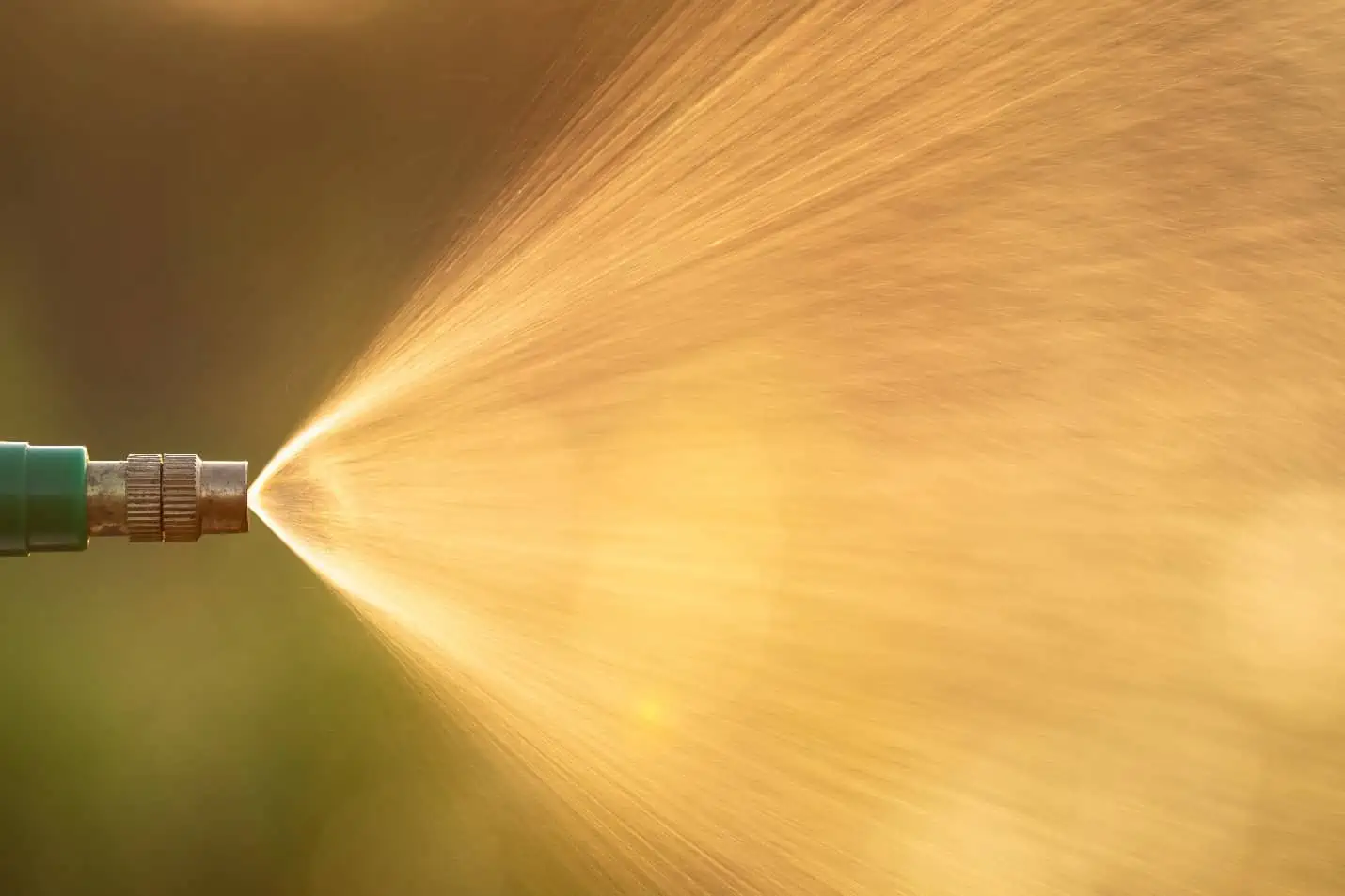
Fuel Nozzles
Fuel nozzles include gasoline nozzles found at gas stations for refueling vehicles, and diesel nozzles used to fuel diesel engines and machinery.
Hydraulic Nozzles
Hydraulic nozzles include hydraulic jet nozzles used in construction and mining equipment for high-pressure water or hydraulic fluid jetting, and hydraulic spray nozzles used in hydraulic systems for lubrication and cooling.
Air Nozzles
Air nozzles include blow-off nozzles used to blow air to clean or dry surfaces, such as in manufacturing processes, and aeration nozzles employed in wastewater treatment and aquariums to introduce air into water.
Rocket Nozzles
Rocket engine nozzles are critical components in rocket propulsion systems to expel exhaust gases at high speeds and generate thrust.
Nozzles for Fluid Mixing
Some nozzles are also used to mix fluids, such as venturi nozzles utilized to mix two fluids or gases by creating a pressure difference.
Types of Nozzles Based on Structure
Aside from the different types mentioned above, nozzles can also be divided into three main types based on structure: convergent, divergent, and convergent-divergent.
Convergent Nozzles
A convergent nozzle accelerates fluid flow. As the name suggests, the nozzle’s walls converge to a narrow throat, forcing the fluid to increase its velocity. You’ll find this design in applications where the need for high velocity and momentum is critical.
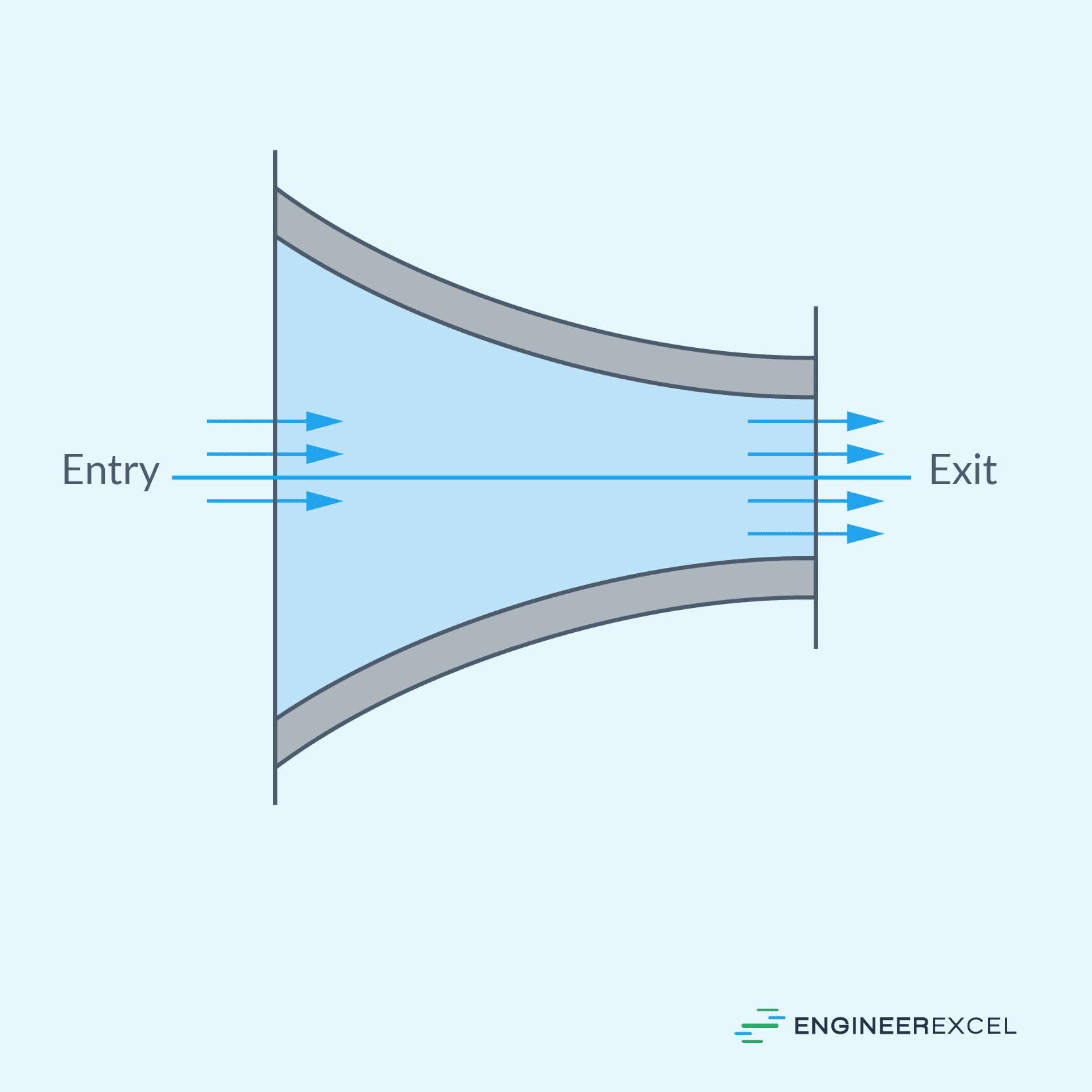
These nozzles work best with subsonic fluid flow, due to the nature of their shape. When the fluid passes through the throat, it reaches its maximum speed, while the resulting pressure drop causes further acceleration. In industries like aerospace and automotive, convergent nozzles are common due to their effectiveness in cases like jet propulsion or fuel injection systems.
However, they do have their limitations; as fluid velocities reach the speed of sound, further acceleration becomes nearly impossible. The compressible nature of gases leads to shock waves, causing significant energy loss and decreased performance. For this reason, convergent nozzles aren’t ideal for supersonic applications where other nozzle designs perform better.
Divergent Nozzles
A divergent nozzle is a type of nozzle where the cross-sectional area expands as the fluid flows through it. This design is usually employed when you need to convert high pressure and low velocity into lower pressure and high velocity. The most common application of divergent nozzles is in subsonic gas flow conditions.
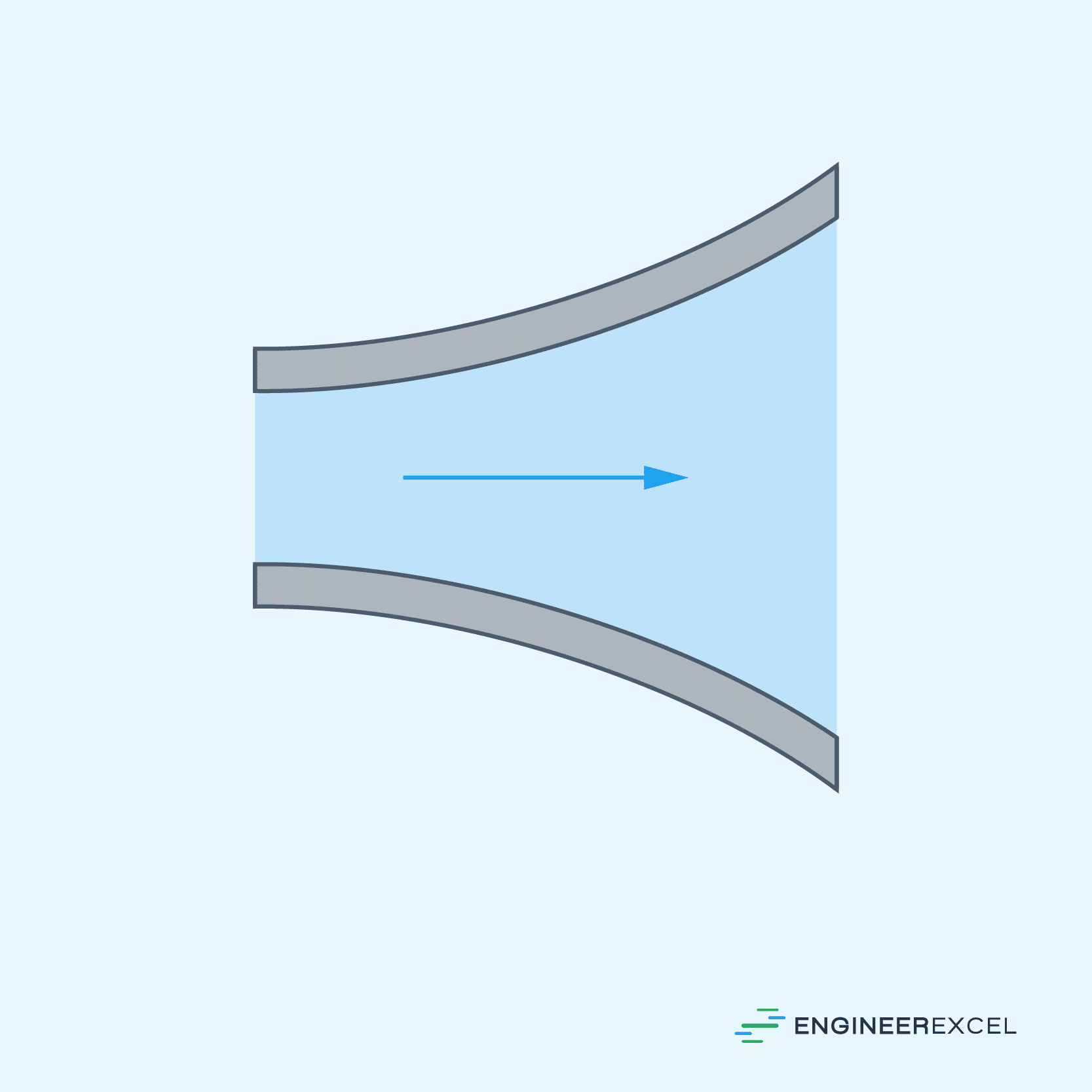
Divergent nozzles are widely utilized in various industries, such as aerospace, manufacturing, and power generation. They are particularly helpful when applied in rocket engines, steam turbines, and hydraulic systems.
It’s important to consider material selection, manufacturing techniques, and maintenance when working with divergent nozzles. The choice of material will depend on factors like heat resistance, corrosion resistance, and cost. Common materials used include stainless steel, titanium, and nickel-based alloys. Maintaining the nozzle’s performance requires regular inspections for wear, erosion, and any possible damage.
Convergent-Divergent Nozzles
A convergent-divergent nozzle, also known as a de Laval nozzle, is a specialized nozzle design employed in various applications. You may find them in rocket engines, steam turbines, and jet propulsion systems. These nozzles effectively accelerate fluids while decreasing pressure, optimizing flow in supersonic and subsonic conditions.
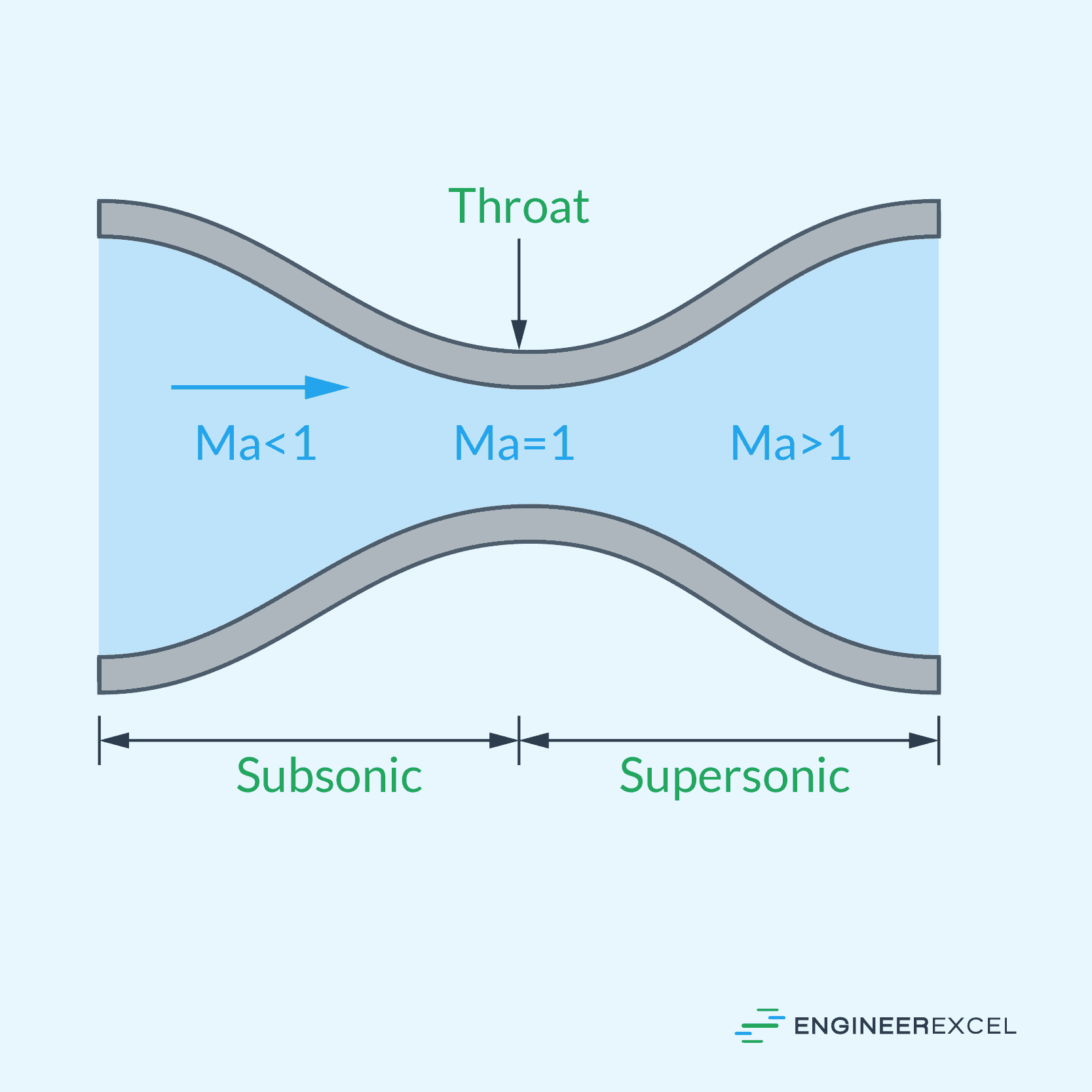
The design incorporates a converging section, throat, and diverging section. The converging section narrows the flow passage, increasing the fluid velocity. At the throat, the passage is narrowest, enabling the fluid to reach its maximum velocity.
In the diverging section, the flow passage gradually expands, causing the fluid velocity to decrease and the pressure to rise. This conversion of kinetic energy to pressure suits applications requiring a specific fluid exit pressure. By choosing a convergent-divergent nozzle, you enhance the efficiency of systems that require supersonic or subsonic fluid flow.
Types of Spray Nozzles
Spray nozzles also come in various forms and sizes, each designed for specific applications and purposes. When choosing a spray nozzle, you’ll need to consider factors such as your desired spray pattern, flow rate, pressure, and material compatibility. Below are some common types of spray nozzles.
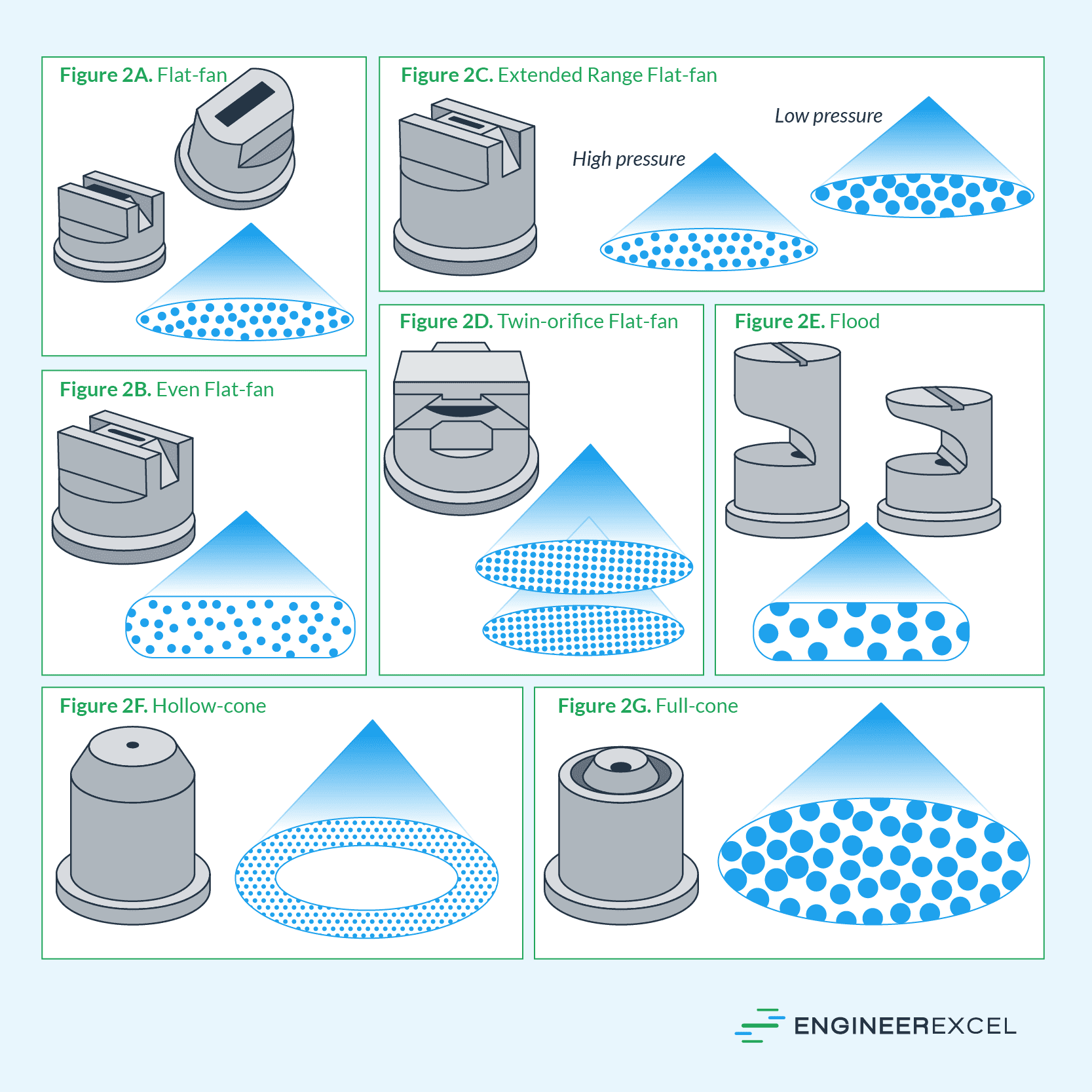
Fan Nozzles
Fan nozzles are commonly used in spray applications due to their versatility and even distribution of liquids. They create a flat, fan-shaped spray pattern that helps to cover a wide area uniformly. There are a variety of fan nozzles, including standard, air-induced, and variable-rate styles.
Flood Nozzles
Flood nozzles are particularly useful for applications requiring a wide spray pattern and uniform distribution of liquid. They are commonly used in industries such as firefighting, irrigation, cleaning, and cooling.
TurfJet Nozzles
TurfJet nozzles are specifically designed for efficient irrigation and landscaping applications. They provide uniform water distribution and offer significant water-saving benefits.
With TurfJet nozzles, you can expect a large droplet size that minimizes misting and wind drift. This is particularly beneficial in windy environments or areas with high evaporation rates, as it ensures your water is effectively reaching your desired locations.
Hollow-Cone Nozzles
Hollow-cone nozzles create a circular spray pattern with the liquid being distributed across the perimeter of the circle. This type of nozzle is suitable for applications that require a fine spray or a uniform distribution of liquid over a specific area. The spray pattern is usually shaped like a hollow cone or ring, with little to no liquid in the center.
Full-Cone Nozzles
Full-cone nozzles are designed to produce a full cone-shaped spray pattern, providing uniform distribution of liquid across a circular area. They are able to deliver even distribution of droplets, which is particularly useful for cooling, washing, dust suppression, and chemical processing tasks.
